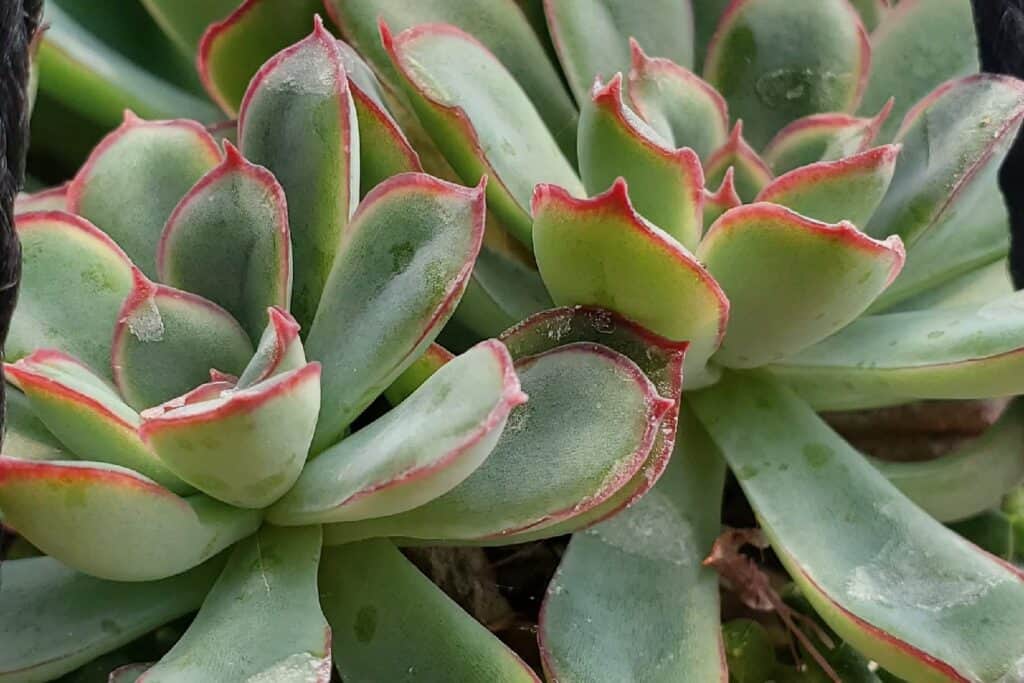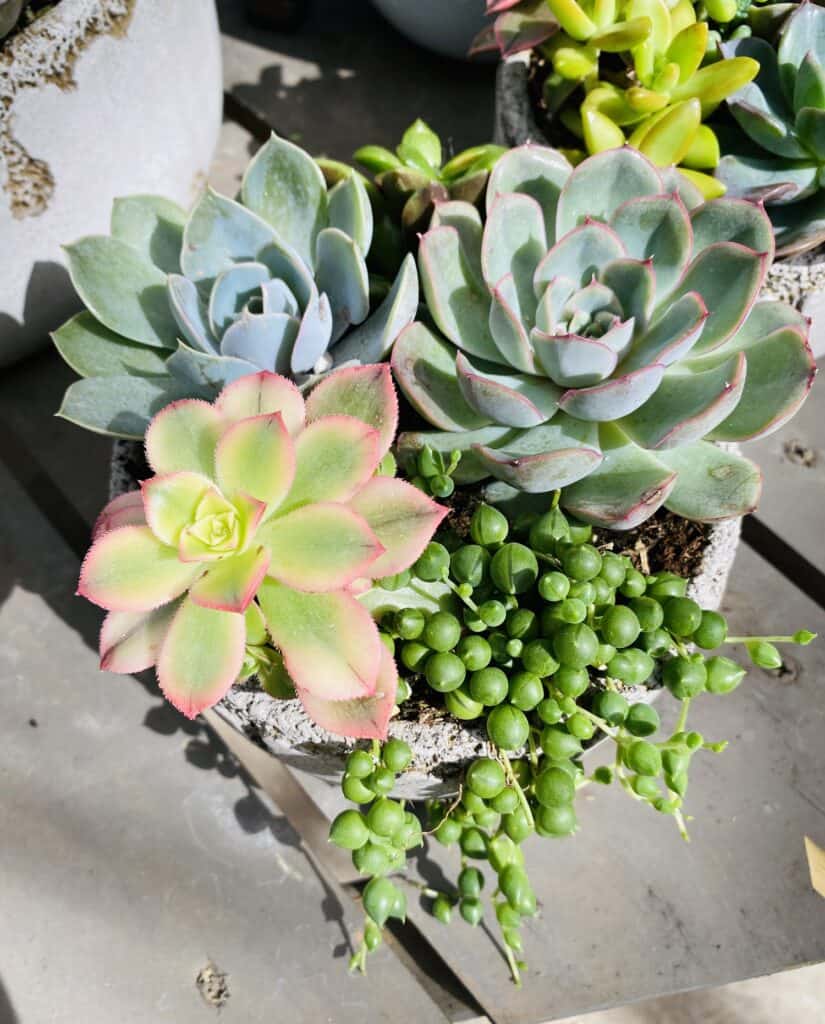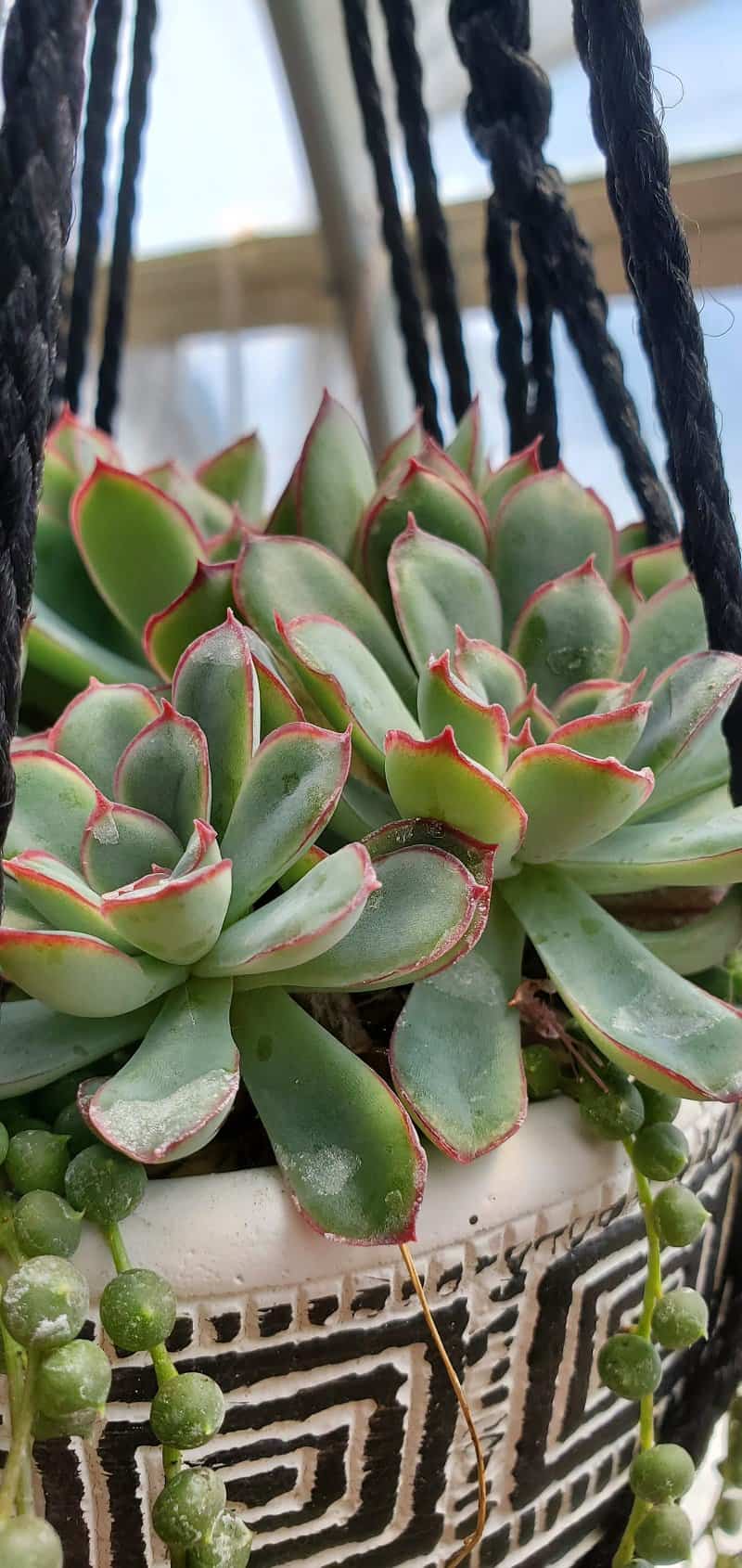Echeveria ‘Pulidonis’ – Information & Complete Care Guide
I absolutely love shopping online for succulents and gardening supplies. If you aren't already saving money by comparing prices online, give it a try! Here are six of my favorite things that I have purchased online as I build my own succulent oasis:
Are you looking for a low-maintenance plant that’s easy to take care of, but still has plenty of personality? Look no further than Echeveria ‘Pulidonis’! This gorgeous succulent is perfect for beginners who want to build their succulent collections.
With its bright green and blue hues, it can bring life and color into any room in your home. And the best part is, with just a few simple steps you can become an expert on caring for these beautiful plants! We’ll explore all the wonderful things about Echeveria ‘Pulidonis’, from its unique characteristics to how to give it proper care.
Caring for a echeveria ‘pulidonis’ succulent is relatively easy, and it can make an excellent addition to your indoor or outdoor garden. I’ve also used this succulent in floral bouquets to add stunning texture and color. To truly maximize the beauty of each echeveria type, it’s critical to comprehend the unique nuances that differentiate one species from another in terms of care and upkeep.
This article will provide an in-depth guide to caring for your echeveria ‘pulidonis’ succulent. I’ll cover topics such as water requirements, lighting needs, temperature preferences, soil types and more.
Scientific Name
Echeveria ‘Pulidonis’
Common Name
Pulido’s Echeveria
Physical Description of Echeveria ‘Pulidonis’

Echeveria ‘Pulidonis’ is a petite, slow-growing succulent featuring fleshy leaves that form a rosette with no visible stem. The leaves are obovate in shape and curve upwards on the edges. They have a beautiful green-blue coloration and when exposed to adequate sunlight, the tips turn a hint of red.
The leaves are waxy and powdery to the touch due to the presence of farina, a natural substance succulents produce to protect their leaves from harsh sunrays. Echeveria ‘Pulidonis’ is a small succulent with mature rosettes reaching only about 4-5 inches in diameter and an overall plant height of about 8 inches. When this plant is thriving, it should produce clusters of bright yellow flowers during the springtime.
Related: Succulents With Pink Flowers (+Bloom Timeline)
Growing Season of Echeveria ‘Pulidonis’
The growing season for Echeveria ‘Pulidonis’ is typically from spring to early summer. During this growth period, the succulent thrives in temperatures ranging from 65-75 degrees Fahrenheit.
This plant can survive with temperatures down into the 50s but will not tolerate frost or extreme cold temperatures. Frost will kill this plant quickly, so I recommend that you move it indoors during the winter months.
How to Care for Echeveria ‘Pulidonis’

Taking care of your echeveria ‘pulidonis’ doesn’t have to be difficult! Here are some helpful tips, plus links to my comprehensive guides if you need more information.
Watering Needs of Echeveria ‘Pulidonis’
Echeveria ‘Pulidonis’ can survive with minimal watering. During its active growth period, water the succulent enough to keep the soil lightly moist, but not soggy or saturated.
During the hot summer months, it may require occasional watering to prevent wilting. In winter, allow the soil to dry out completely between waterings. Over-watering can lead to root rot, so be sure to always let the soil dry out before watering again.
Related: Where to Buy Succulents
Sunlight Needs of Echeveria ‘Pulidonis’
Echeveria ‘Pulidonis’ requires at least 6 hours of bright, direct sunlight to partial shade per day to grow successfully. Plenty of light will help the plant develop its best color and shape.
If you’re growing this plant indoors or in an area with limited sunlight, make sure it’s placed close to a sunny window for optimal growth results. If you notice that the plant is not maintaining its compact structure, you can supplement the sunlight with a grow light.
Soil Needs of Echeveria ‘Pulidonis’
Echeveria ‘Pulidonis’ prefers a well-draining soil mix that will ensure proper drainage and aeration for the roots of the plant. You can purchase a cactus and succulent soil mix from your local gardening center, or make your own using potting soil, perlite, and coarse sand.
Propagation Methods of Echeveria ‘Pulidonis’
Echeveria ‘Pulidonis’ can be propagated by leaf or stem cuttings, as well as through offsets. To propagate from leaves, carefully remove a healthy leaf from the plant and place it on top of moist soil. The leaf will begin to form roots before producing new shoots and creating a new plant.
For stem cuttings, you can use a sharp knife to cut a healthy 4-5 inch piece from the end of a mature stem. Allow the cutting to dry for several days before placing it in soil.
Offsets are also known as “pups” and can be gently pulled away from the mother plant and replanted in its own pot. All methods require bright light and regular watering to ensure successful propagation.
Related: How to Start a Greenhouse for Succulents
Troubleshooting Echeveria ‘Pulidonis’

When it comes to troubleshooting the health of your Echeveria ‘Pulidonis’, there are a few common signs you should look out for.
Overwatering is one of the biggest problems when growing this succulent. Pulido’s echeveria leaves turning yellow is the first sign to watch for as well as a change in the leaves’ form. You will start to notice the leaves becoming translucent, soft, and squishy. To avoid overwatering, make sure to allow the soil to completely dry out before watering again.
Not getting enough sunlight can also lead to weakened growth and poor health. Make sure your Echeveria ‘Pulidonis’ is placed in an area with at least 6 hours of direct or partial sunlight per day. Also, I recommend inspecting your plants regularly for pests such as mealybugs, vine weevil, and aphids. If you spot any of these pests, use an insecticidal soap or neem oil to treat the affected areas.
Echeveria ‘Pulidonis’ in Review
The Echeveria ‘Pulidonis’ is a beautiful, low-maintenance type of succulent that can thrive in the right environment and adequate sunlight. With minimal watering needs and ample bright light, this plant is perfect for container gardens or arranged with other succulents as part of an eye-catching display. With some knowledge, patience, and skillful care, your echeveria ‘pulidonis’ can be a beautiful addition to your home or garden for years to come.
Related: Best Succulents for Full Sun
